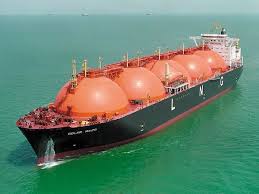
From the AFR:
Seven Group Holdings chief executive Don Voelte has raised fresh questions about the viability of $70 billion worth of gas export plants in Gladstone, warning the economics of the industry had become tougher and coal seam gas remained difficult to extract.
While the former Woodside Petroleum boss stressed he wished the three massive Queensland plants “all the success in the world” – BG Group’s Queensland Curtis, Santos’s GLNG and Origin Energy’s APLNG – he described the investment as “a big bet” in a process “with no pilot and no test”.
“I just think coalbed methane gas is tough because there are no liquids in it. It is inherently a tough gas – you’ve got to have multiple wells,” said Mr Voelte, who was in London for a Goldman Sachs investment conference.
“I made an opinion early on I wouldn’t take my [then] company into it. I would make the same decision today. But I don’t wish any of the companies involved any ill will.”
His comments come at a critical time for the Queensland’s liquefied natural gas industry, which is nearing the start-up of production and will be the first commercial instance worldwide of large-scale production of LNG from coal seam gas.
I won’t add to the doubts about gas shortages, only time will tell. My main concern was summarised by Alberto Calderon:
“What is clear is that Australia will become a major producer of LNG. The problem is that most Australian LNG production sits on the right hand side of the cost curve. Contracted tons will be under pressure.”
“Contracted tonnes will be under pressure”. That’s the big worry. Why will they be? From LNGworldnews:
This year was very successful for Houston-based LNG player Cheniere. The company has signed several LNG deals for its Corpus Christy liquefaction project in Texas, and the construction on its Sabine Pass four liquefaction trains is well underway.
In an interview with LNG World News, Jean Abiteboul, President of Cheniere Supply & Marketing, discusses the company’s plans for the future, U.S. LNG competitiveness, as well as the impact of the shale boom.
Can you update on the current construction progress at the Sabine Pass liquefaction project, and when do you expect first LNG from Train 1 and 2?
“Construction on the Sabine Pass Liquefaction Project, on a consolidated EPC basis, is progressing well with Stage 1 (Trains 1 and 2) project about 72% complete, and Stage 2 (Trains 3 and 4) approximately 38.5% complete.
We expect to make first LNG from Train 1 in late 2015, with commercial deliveries to commence in early 2016. Subsequent Trains are expected to come online in 6-9 month increments.”
Cheniere aims to make an FID for the Corpus Christy project in January next year. This year the company signed multiple contracts for the liquefaction project, and the capacity of Train 1 and Train 2 is fully booked. Is the company still targeting January 2015 for an FID, and can you tell us something more about these contracts that were signed this year?
“We continue to target early 2015 for FID of the Corpus Christi Liquefaction Project, subject to receipt of final regulatory approvals and securing necessary financing.
The SPAs signed thus far on Corpus Christi demonstrate the continued strength in a global demand for price-competitive LNG. The US. buyers – be they end-users or portfolio players – continue to value the contract flexibility and time visibility that few other global LNG projects can offer.”
Recently you said at a conference in Amsterdam that the impacts of U.S. LNG exports have already started, what did you mean by that?
“Two examples: without waiting for the start-up of US LNG deliveries, some “traditional” suppliers have already adapted their price formula to take into account this new competition.
What is your opinion on the pricing of future LNG exports from the U.S. if you look at the liquefaction costs and transport distance?
“I believe that, given the reserves and the potential production of US shale gas, and also due to the fact that a significant part of this gas, associated with oil and liquids, is “stranded“, the Henry Hub should remain at a very reasonable level.
If you add to this price the cost of liquefaction (say, 3.5 USD/MMBTU), and the cost of transportation (between 1 USD/MMBTU for Europe and 3 USD/MMBTU for Asia), US LNG should remain competitive. It also seems to be the opinion of our customers.”
If the US can ship this stuff to Japan at roughly $11mmBtu, $18 mmBtu contracts with Australian firms will not hold, no matter how honorable the client.

